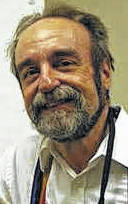
Last week, we left Galileo Galilee poised to begin a house arrest that would extend almost a decade until he died in 1642.
The Catholic Church’s Inquisition had sentenced him for his public support of Copernicanism, the notion that the sun is at the center of the solar system.
Galileo’s telescope days were over. He experienced a severe loss of vision in 1632, just a year before his house arrest. He was profoundly blind by 1634. Besides, any telescope used for astronomical purposes would have violated the agreement with the Inquisition that had led to his relatively light sentence.
Undaunted, Galileo turned his attention to falling objects.
Just as Galileo’s telescopic findings helped to overturn the Ptolemaic, Earth-centered system, his gravitational experiments overturned the Aristotelian notion that lighter objects fall more slowly than heavy objects.
Aristotle (384–322 BCE) believed that matter was composed of four fundamental elements — earth, water, air and fire. Lighter objects contained more of the lighter elements, air and fire. Heavier objects contain more of the heavier elements, earth and water.
Therefore, Aristotle assumed that heavier objects, i.e., objects with higher mass, fall faster than lighter ones. Drop a feather and an iron ball, and the ball will surely reach the ground before the feather.
Galileo realized that the feather’s sluggishness could be attributed to friction with the atmosphere.
Aristotle also believed that the natural state of an object is to be at rest. If we remove the force that makes an object move, it should stop moving.
What mysterious force causes objects to fall? Aristotle had not a clue. Instead, he postulated that everything tries to seek its “proper place.” Earth, the heaviest element, was at the bottom. Water floated above it. Above water was air. Fire was the lightest element because it rises through the air to its “proper place” above.
Aristotle’s model fails because he has no notion of two basic ideas in physics. First, he didn’t understand or even conceive of acceleration, that a falling object’s speed increases as it gets closer to the ground.
Also, he didn’t envision inertia — that a moving object will stay in motion unless acted upon by an outside force. In this case, friction with the air influences the motion of the falling object. Also, the ball would continue to drop but for the surface of the Earth, which stops the motion.
According to legend, Galileo began by dropping objects from the Leaning Tower of Pisa during the period before his house arrest.
If he did so, he discovered that the speed of the motion of a falling body and the increase in that speed as it gets closer to the ground are exceedingly difficult to measure. Everything happens too quickly. However, the story is probably apocryphal, one of many enshrined in Galileo’s mythology.
Instead, Galileo designed a systematic set of circumstances, a set of experiments, that eliminated air as a factor. In the process, he helped to establish fundamental experimental protocols still used by scientists today.
Galileo rolled balls of various weights down inclined planes of varying inclination angles. He still had a friction problem, but the friction of the balls against their respective ramps was about the same in each case.
By adding virtually equal friction to each element, Galileo could slow down the rate of acceleration and measure it.
Galileo’s careful experiments showed that two balls of different weights traveling down the same ramp reached the ground simultaneously. The masses of the balls were insignificant. The force that caused them to fall seemed to be the critical factor.
Galileo showed that a body would keep moving forever without friction, a condition we moderns find in space above Earth’s blanket of air. He also understood that some mysterious force must start a falling body in motion.
He didn’t name that force “gravity,” but he was the first, even partially, to understand that it exists. More importantly, he discovered the presence of acceleration and inertia in nature.
Galileo demonstrated that gravitational acceleration is a constant for all objects near Earth’s surface. The velocity of a falling object increases until it hits the ground.
Thus, our thanks should go to the Catholic Church for giving Galileo the time to do those experiments.
Next week: Galileo’s legacy.
Tom Burns is the former director of the Perkins Observatory in Delaware.

